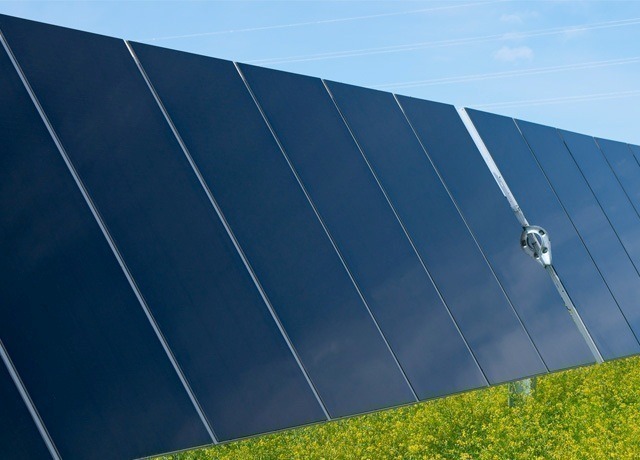Today’s renewable energy news includes announcements on Windport, BAE Systems, We Recycle Solar, Scania, BLUETTI, Komatsu, Trinasolar, among others.
Windport and Port of Esbjerg Collaborate to Boost Offshore Wind Development
Windport and Denmark’s Port of Esbjerg have formed a partnership to enhance offshore wind development in the North Sea region. This collaboration aims to optimize port facilities and logistics, facilitating efficient assembly and deployment of wind turbines. Both ports are key players in the offshore wind sector, with Port of Esbjerg being one of the largest installation ports globally. This partnership is expected to strengthen the supply chain and support the growing demand for renewable energy in Europe.
BAE Systems to Power New Hybrid-Electric Bus Fleet in San Francisco
BAE Systems has been selected by the San Francisco Municipal Transportation Agency (SFMTA) to supply electric power and propulsion systems for 68 new hybrid-electric buses. These buses will operate in designated “green zones” across the city, switching to battery power to eliminate emissions in areas with high air pollution. This initiative supports San Francisco’s goal of achieving zero-emission operations by 2035. The Series-ER system uses GPS technology to automatically switch the bus engine to electric mode upon entering a green zone.
We Recycle Solar and Renewables Launch Solar Panel Donation Program
We Recycle Solar and Renewables have started a solar panel donation program for Earth Month 2025. The program lets solar developers, power producers, and manufacturers donate extra or used solar panels and get tax benefits. These donated panels will be used in clean energy projects for underserved communities. The goal is to improve energy access and support sustainability. This program continues their earlier Earth Day efforts to promote solar reuse and responsible recycling.
Scania Introduces New Electric Power Solutions for Construction and Mining Industries
Scania has launched new electric power solutions aimed at advancing sustainability in the construction and mining sectors. These battery-electric vehicles (BEVs) are designed to meet the demanding conditions of these industries while reducing environmental impact. Scania’s latest BEVs offer significant power and range, making them suitable for various urban and regional transport assignments. The company is also providing comprehensive support, including charging solutions and maintenance services.
BLUETTI Partners with Leave No Trace to Promote Sustainable Outdoor Adventures
BLUETTI, a leader in clean energy storage solutions, has partnered with Leave No Trace, an organization dedicated to environmental conservation, to encourage responsible outdoor activities. This collaboration aims to provide eco-friendly power solutions that minimize environmental impact during outdoor adventures. By integrating BLUETTI’s portable solar generators into outdoor experiences, enthusiasts can access reliable energy without relying on fossil fuels, aligning with Leave No Trace’s principles of environmental stewardship.
Komatsu to Debut Dimaag’s Mobile Megawatt Charging System at BAUMA 2025
Komatsu will introduce Dimaag’s Mobile Megawatt Charging System (MWCS) at BAUMA 2025 in Munich, Germany. This system is designed to charge heavy-duty electric vehicles, such as those used in construction and mining. The MWCS features a modular design, scalable from 200 kW to 6 MW, and includes a 1 MW mobile charger with autonomous operation capabilities. This technology aims to facilitate the transition to electric machinery in industries requiring high-power equipment.
Trinasolar partners with New Zealand’s Lodestone Energy
Trinasolar has partnered with New Zealand’s Lodestone Energy to bring Te Herenga o Te Rā, one of New Zealand’s latest and largest agrivoltaics farm, into operation this year. The converted dairy farm will deliver clean renewable energy to the region while preserving the land’s agricultural value for sheep grazing under the modules.
The 42MWp farm will generate 69 GWh of clean energy annually, enough to power nearly 10,000 homes, and is the first solar project in New Zealand to feed directly into the grid. Like Lodestone’s other farms, Te Herenga o Te Rā, plans to integrate sheep grazing beneath elevated solar modules, allowing livestock and renewable energy production to coexist.
GreentechLead.com News Desk

